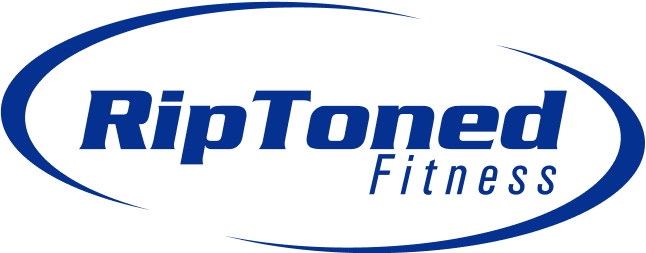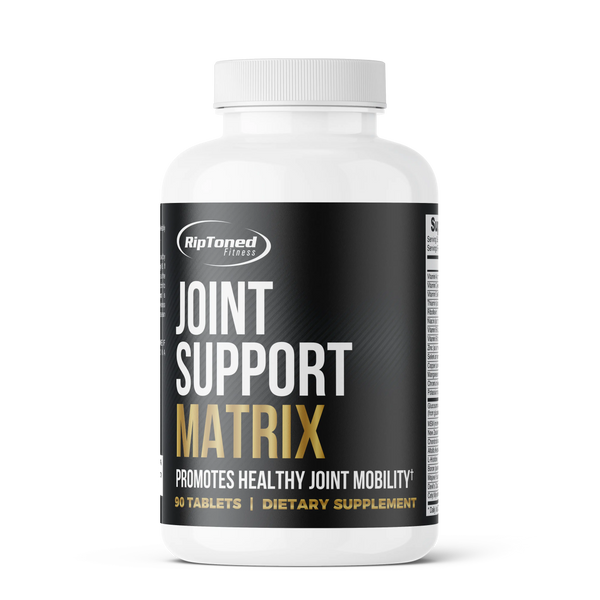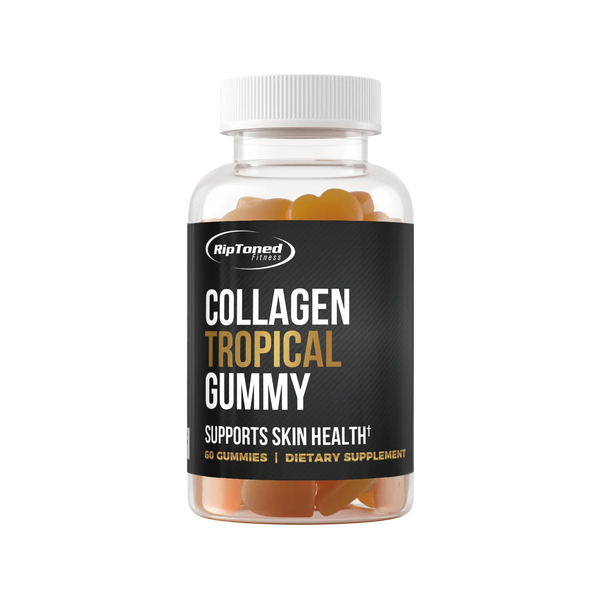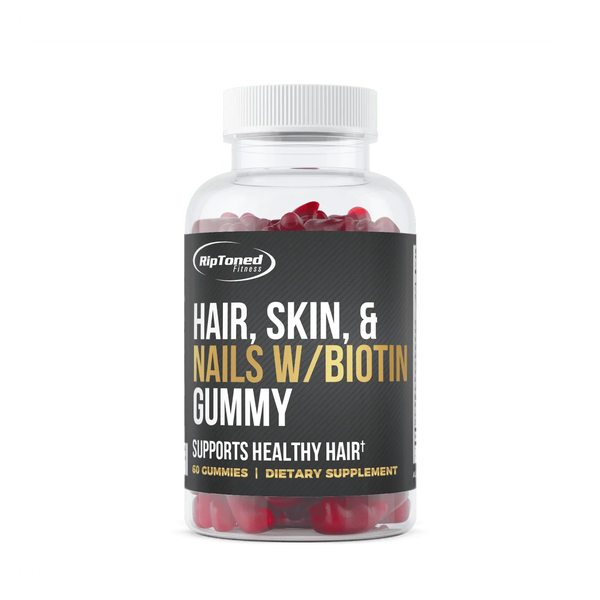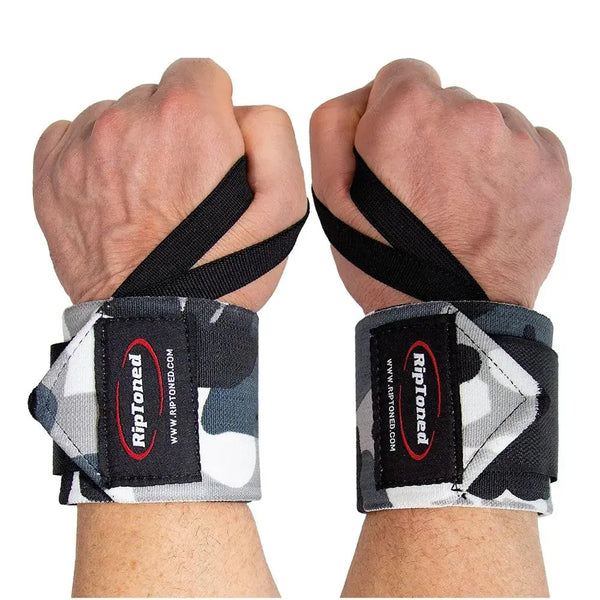
When Can I Lift Weights After Wisdom Teeth Removal? Tips & Guidelines
Mark PasayShare
Wondering when I can lift weights after wisdom teeth removal. Most dentists suggest waiting 7 to 14 days. This timeline helps your body heal and avoid complications. Read on to learn about the recovery phases and tips for safely getting back to your workout routine.
Key Takeaways
- Most dentists recommend waiting 7 to 14 days after wisdom teeth removal before resuming weight lifting to ensure proper recovery and avoid complications. It is important to listen to your body and consult your dentist for personalized advice.
- The initial 24-48 hours post-extraction are crucial for blood clot formation; during this period, all physical activities, especially strenuous ones like weight lifting, should be avoided. Light physical activities can be reintroduced after this initial period but should be done cautiously.
- Factors influencing recovery time include the complexity of the tooth extraction, individual healing abilities, and regular consultation with an oral surgeon. Personal healing rates can vary, and consulting your dentist for tailored advice can help ensure a smooth and safe recovery process.
When Can You Safely Lift Weights After Wisdom Teeth Removal?
The million-dollar question: When can you safely lift weights after wisdom teeth removal? The answer isn’t one-size-fits-all, but most dentists recommend waiting between 7 to 14 days before resuming any weight lifting. This timeline helps ensure comprehensive recovery and avoids potential complications. The key is to listen to your body and consult with your dentist to tailor the reintroduction of weight lifting into your routine.
During the initial 24-48 hours post-extraction, it is crucial to avoid any physical activity, including exercise, as this period is vital for proper blood clot formation and initial healing. Following this, light physical activities can begin, but intense exercises like weight lifting should still be avoided until you reach a significant level of recovery.
To help you navigate this recovery period, let’s break down the timeline into the initial 24-48 hours, the 3-4 days post-extraction, and one week and beyond. Each phase has its own set of guidelines to ensure you recover smoothly and safely.
Initial 24-48 Hours
The initial 24-48 hours after wisdom teeth removal are critical. During this time, proper rest and sufficient sleep are essential for the healing process. Resting helps the open wound in the extraction socket to heal and close, promoting proper blood clot formation and expediting the healing process. To aid in this, keeping your head elevated with 2-3 pillows while resting can help reduce swelling.
Physical activity should be strictly limited during this period to prevent increased blood pressure and bleeding. Strenuous activities can disrupt blood clot formation, leading to further bleeding and delayed healing. Therefore, it’s recommended to avoid any physical exertion, including:
- Weight lifting
- Running or jogging
- High-intensity workouts
- Contact sports
During the first 24-48 hours after wisdom teeth removal, it is important to follow the prescribed care instructions to avoid wisdom tooth pain. After that, take precautions for a few more days to ensure proper healing.
3-4 Days Post-Extraction
After the initial 24-48 hours, the next few days are about easing back into light physical activities. Resting for 2-3 days post-surgery is critical to minimize swelling and oozing. Light physical activities, such as walking and stretching, can be resumed as long as they do not involve heavy lifting or bending over,
For those who had upper wisdom teeth removed, light physical activities can be resumed within five days, such as watching for signs of pain or bleeding. However, for lower wisdom teeth removal, it is advisable to abstain from exercise for at least ten days due to the denser jawbone needing longer to heal. During this period, be cautious when clenching your teeth and avoid heavy lifting to prevent disrupting blood clot formation.
One Week and Beyond
As you approach the one-week mark post-extraction, you can gradually start to reintroduce more strenuous activities and weight lifting. It is generally advised to resume weight lifting around the 6th day after wisdom tooth extraction, but this depends on your healing progress. Some sources recommend waiting at least a week before resuming vigorous activities to prevent complications.
If the extraction involved significant blood loss and tissue manipulation, it might be necessary to wait up to a month before resuming intense exercise. Always monitor your body’s response and consult with your dentist to ensure it’s safe to increase the intensity of your workouts.
Factors Influencing Your Recovery Time
Several factors influence how quickly you can return to exercising after a wisdom tooth extraction. The complexity of the extraction, individual healing abilities, and consultation with your oral surgeon all play pivotal roles in determining your recovery time. Understanding these factors can help you manage your expectations and plan your recovery more effectively.
Firstly, the complexity of the tooth extraction procedure significantly affects recovery time. Impacted or awkwardly positioned teeth lead to longer recovery periods compared to fully erupted and correctly positioned teeth.
Secondly, personal healing abilities vary greatly among individuals. Age, genetics, and overall health influence how quickly you heal.
Lastly, regular consultation with your oral surgeon provides personalized advice that aids in a smooth recovery after oral surgery.
Let’s delve deeper into these factors to understand how they influence your recovery timeline and when you can safely resume weightlifting and other physical activities.
Complexity of Tooth Extraction Procedure
The complexity of the tooth extraction procedure is a major determinant of recovery time. Impacted wisdom teeth, which are more difficult to remove, often require opening up the gums and drilling through the bone, leading to a longer recovery period. Conversely, less complex extractions, such as those involving fully erupted teeth, typically have shorter recovery periods.
If multiple teeth were extracted or in awkward positions, the recovery time would be extended. This is why it’s crucial to follow your oral surgeon’s specific recommendations based on the complexity of your wisdom tooth extraction.
Personal Healing Ability
Personal healing ability varies from person to person and is influenced by several factors, including:
- Age: Younger patients often heal faster than older individuals due to less dense bone around the teeth.
- Genetics: Some individuals may have a genetic predisposition to faster healing.
- Overall health: Good overall health can contribute to faster healing rates.
It is important to note that individual healing rates may vary.
Patients with underlying health conditions, such as diabetes, may experience slower healing times. Therefore, it’s important to consider your health and consult with your dentist to get a better understanding of your expected healing timeline.
Consultation with Your Oral Surgeon
Consulting with your oral surgeon is crucial for personalized advice on when to safely resume physical activities post-extraction. Personalized care from your oral surgeon can significantly aid in a smooth recovery. They can provide guidance on safe timelines for resuming different types of physical activities, such as:
- Weight lifting
- Cardio exercises
- Yoga or stretching
- Contact sports
It is important to follow their recommendations to ensure proper healing and minimize the risk of complications.
For the best recovery results, always ask your dentist for personalized advice based on your unique situation. This ensures you’re not rushing the recovery process and risking complications.
Types of Exercises and Their Impact
Choosing the right types of exercises during your recovery is vital to avoid complications and ensure a smooth healing process. Initially, low-impact and gentle exercises like walking, swimming, and yoga are recommended. These activities help maintain your physical activity level without putting undue strain on the surgical site.
High-intensity workouts and heavy lifting should be avoided after wisdom teeth removal as they can disrupt the healing process and cause excess bleeding. It’s important to wait until your healing is well underway before resuming such activities. Let’s explore the exercises you can safely engage in and those you should avoid during your recovery.
Low-Impact Activities
After the third day post-extraction, you can start easing back into your exercise routine with low-impact activities. Walking, swimming, and yoga are excellent choices that keep you active without risking your recovery. Light stretching is also a recommended low-impact activity that can be performed during the early stages of recovery.
These gentle exercises help maintain your physical fitness while allowing your body to heal properly. Start with low-impact movements and gradually increase the intensity as you feel more comfortable.
High-Intensity Workouts
High-intensity workouts like running, jumping, and karate should be avoided initially after wisdom teeth removal. Engaging in such activities too soon can disrupt the healing process and cause excessive bleeding. Jumping back into strenuous activities prematurely can lead to a dry socket, a painful condition that significantly prolongs the healing process.
To prevent complications, it’s recommended to avoid high-intensity exercises until your healing process is complete. Always consult with your dentist or oral surgeon before resuming these activities.
Weight Lifting Considerations
When reintroducing weight lifting into your exercise routine, modifications are necessary to prevent strain on the surgical site. Consider reducing the volume, intensity, or duration of your workouts to accommodate your healing progress. Monitoring your blood pressure before and after exercise is crucial to prevent the dislodging of blood clots, which is essential for the healing process.
By making these adjustments, you can safely resume weightlifting without risking complications. Always listen to your body and consult with your dentist for personalized recommendations.
Related Products
Monitoring Your Symptoms During Exercise
Monitoring your symptoms during exercise is vital to ensure you’re not jeopardizing your recovery. Discomfort, bleeding, or disruption of the healing process are signs that you need to pause or stop exercising. Knowing when to take a break can make all the difference in your recovery journey.
Symptoms like severe pain, facial swelling, or any bleeding should be closely monitored during exercise. If you experience any of these symptoms, it’s crucial to stop and consult with your dentist immediately.
Let’s discuss the signs that indicate you should pause or stop exercising and how to gradually reintroduce your exercise routine.
Signs to Pause or Stop Exercising
After wisdom tooth removal, it is important to monitor for any adverse symptoms while exercising to ensure a smooth recovery. If you experience throbbing pain, severe pain, or bleeding during exercise, it is a sign to stop immediately. Ceasing exercise at the onset of such symptoms allows more time for healing and helps to prevent complications.
By paying attention to these signs, you can avoid further complications and ensure a successful recovery. Always prioritize your health and recovery over your exercise routine.
Gradual Reintroduction to Exercise Routine
Gradually reintroducing exercise into your routine is key to a successful recovery process. Start with low-impact activities like walking or gentle stretching to avoid putting excessive strain on the surgical site. As your healing progresses, you can slowly increase the intensity of your workouts.
Before reintroducing exercise, consult with your oral surgeon to get personalized advice based on your healing progress. By gradually increasing the intensity and monitoring any discomfort or symptoms that may arise, you ensure a smooth recovery and prevent complications.
Preventing Complications Through Proper Care
Maintaining good oral hygiene and following wound care instructions are crucial to prevent complications after wisdom teeth removal. Your ability to return to a regular exercise routine may be impacted by complications such as:
- dry socket
- infection
- swelling
- bleeding
These issues can affect your recovery and physical activity. Practicing good oral hygiene and following your dentist’s instructions can help promote healing and prevent these issues.
Complications from wisdom tooth extraction may include:
- Infection
- Dry socket
- Swelling
- Bleeding
- Numbness in the jaw
- Potential damage to adjacent teeth
Following prescribed medications, including antibiotics and pain relievers, can accelerate healing. Let’s explore the specific oral hygiene practices and wound care precautions you should follow to ensure a successful recovery.
Oral Hygiene Practices
Proper oral hygiene is essential after wisdom teeth removal. Brushing and flossing should be done carefully around the extraction site to prevent dislodging the clot. After two days, rinsing with warm salt water or a saline rinse can help kill bacteria and maintain healthy tissues.
Consuming soft and nutritious foods aids healing post-extraction and avoiding habits like smoking can significantly aid in a quicker recovery. By maintaining these practices, you promote a smooth recovery and prevent complications.
Wound Care and Precautions
Following aftercare instructions is crucial for a quicker recovery. Regular consultations with a dentist can help monitor the formation of a stable blood clot at the extraction site, which is crucial for proper healing. Dentists can provide specific instructions based on individual cases to prevent complications such as dry sockets.
Monitor for symptoms such as:
- severe pain
- facial swelling
- infected pus
- pointy bone spicules
- fever
- swollen lymph nodes
- difficulty swallowing
After tooth extraction, by following these wound care precautions, you can avoid complications and ensure a successful recovery.
Personalized Advice Based on Individual Cases
Each individual’s recovery post-extraction can vary, making personalized advice from healthcare professionals critical to addressing unique healing patterns and concerns. Consulting with a dentist ensures the healing process is proceeding as anticipated and can help address potential complications. Dentists can offer customized advice tailored to your specific health needs and lifestyle after a tooth extraction.
During comprehensive consultations, dental health is assessed, and personalized advice is provided for post-extraction care. This includes guidance on managing pain, preventing infection, and safely resuming daily activities, such as exercise. By seeking personalized advice, you can adapt general post-extraction care recommendations to fit your lifestyle and fitness goals, ensuring a safe and effective return to physical activities.
Consulting Your Dentist Regularly
Follow-up appointments are crucial for monitoring the healing process. Consulting with a dentist can provide personalized guidance tailored to your situation, ensuring optimal post-extraction care.
Regular dental check-ups help identify and treat early signs of complications post-extraction. Dentists can adapt general post-extraction care recommendations to fit your lifestyle, advising you on safe timelines to resume specific activities.
Adapting Recommendations to Your Lifestyle
Recommendations for resuming physical activities post-extraction can be customized based on individual fitness goals and daily routines. Consider personal daily routines and specific fitness objectives when adapting guidelines after wisdom teeth extraction.
Personalized adjustments to general recommendations can ensure a safer and more effective return to physical activities. By working with your dentist, you can develop a recovery plan that aligns with your lifestyle and fitness goals.
Summary
In summary, waiting 7-14 days before lifting weights after wisdom teeth removal is crucial to ensure comprehensive recovery and avoid potential complications. Factors such as the complexity of the extraction, personal healing abilities, and consultation with your oral surgeon significantly influence your recovery timeline.
By choosing low-impact activities initially and gradually reintroducing more strenuous exercises, you can maintain your active lifestyle while promoting a smooth recovery. Always monitor your symptoms during exercise and follow proper oral hygiene and wound care practices to prevent complications. Consulting with your dentist for personalized advice ensures a safe and effective return to your regular exercise routine. Your recovery journey is unique, and following these guidelines will help you get back on track safely.
Frequently Asked Questions
How long should I wait to lift weights after wisdom teeth removal?
You should wait 7 to 14 days before lifting weights after wisdom teeth removal to allow for proper healing and reduce the risk of complications.
What types of exercises are safe after wisdom teeth removal?
After wisdom teeth removal, it's best to stick to low-impact activities like walking, swimming, and yoga. Avoid high-intensity workouts and heavy lifting until you're fully healed.
How can I prevent complications after wisdom teeth removal?
To prevent complications after wisdom teeth removal, it's important to maintain good oral hygiene, follow wound care instructions, and monitor your recovery progress closely. These steps can help prevent dry sockets, infection, swelling, and bleeding.
What should I do if I experience severe pain or bleeding during exercise after wisdom teeth removal?
Stop exercising immediately if you experience severe pain or bleeding, and consult your dentist. This will allow for more time for healing and reduce the risk of complications.
Why is it important to consult with my dentist regularly after wisdom teeth removal?
It is important to consult with your dentist regularly after wisdom teeth removal in order to monitor the healing process and receive personalized guidance for optimal post-extraction care.

Related Posts
-

POWERLIFTING THE RIGHT WAY
-

Unlock Your Strength Potential: Conquer Weak Grip Strength Now
-

Bench Press to Success - Mastering your form
-

5 Tips for Women to Build Lean Muscle Tone in 2024
-
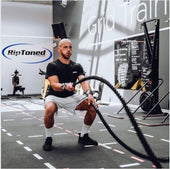
How to Get the Most Out of a Lifting Session
-

Working Out Under the Weather
-

The Lesser-known Benefits of Weightlifting
-

How Weight Training Supports Immune Health
-

The History of Weightlifting
-

Rest up to build up
-

4 Tips to Improve Lifting Gains The Right Way
-

4 Tips to Prevent Training Injuries
-

Top 3 Work Out Myths EXPOSED!!
-

Common Lifting Injuries (And How to Avoid Them)
-
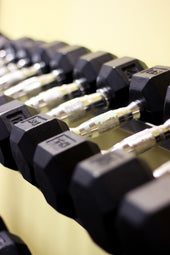
Hit the Gym or Stay at Home?
-
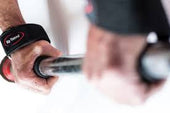
Weightlifting Benefits – Many Health Benefits for Men and Women
-

How Many Times a Week Should I Deadlift? A Guide to Deadlift Frequency and Programming
-

Can Deadlifts Hurt Your Back? Understanding Risks and Prevention
-

Why Does Whey Protein Make Me Sick
-

Can Protein Powder Upset Your Stomach
-

What To Mix Unflavored Protein Powder With
-

Crush Your PRs: The Gradual Strength Increase Guide for CrossFitters
-

Whey vs Collagen Protein: Which Is Best for You?
-

Can I Take Whey Protein Without Working Out? What You Need to Know
-

Why Does Whey Protein Hurt My Stomach: Causes and Solutions
-

Boost Your Run: Should You Take Pre-Workout Before Running?
-

Top Pre-Workout Benefits: Boost Energy and Enhance Performance
-
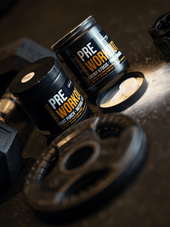
How Long Does Pre-Workout Take to Kick In? Find Out Here!
-
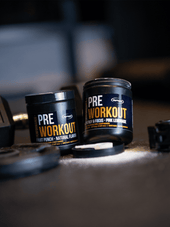
How Long Does Pre-Workout Last? Your Essential Guide
-

Does Pre-Workout Give You Pimples
-

How Long Does Pre-Workout Stay in Your System
-

When Should I Take Pre-Workout
-

Can I Mix Creatine With Pre-Workout
-

Long Term Side Effects of Pre-Workout Supplements
-

How Much Caffeine in Pre-Workout
-

Pre-Workout Alternatives
-

Does Pre-Workout Break a Fast
-

What to Eat Pre-Workout
-

What is In Pre-Workout
-

Advantages of Pre Workout Supplements
-

How To Get Rid Of Pre Workout Itch
-

How To Make Your Own Pre Workout
-

How Many Scoops Of Pre Workout Should I Take
-

How Bad Are Pre Workouts For You
-

How Long Before A Workout Should I Take Pre-Workout
-

How Much Caffeine Is In Bucked Up Pre Workout
-

How Long Does Pre Workout Increase Blood Pressure
-

What Does Pre Workout Do
-

Can I Use Sprite As Pre Workout
-

Can Supplements Boost Weightlifting Motivation
-

Why Do Weightlifters Wear Belts
-

Does Lifting Weights Cause Varicose Veins? What You Need to Know
-

Does Lifting Weights Affect Uterus Health? What Women Need to Know
-

How Lifting Weights Can Affect Your Sex Drive: Does Lifting Weights Make You Horny?
-

Why Don't I Sweat When I Lift Weights? Understanding the Causes
-

Why Are Physical Fitness Attitudes Important? Insights & Benefits
-

Why is Anytime Fitness So Expensive? Understanding Membership Costs
-

Substitute For Whey Protein Powder In Keto Baking
-

How Many Calories Does 1 Hour of Weightlifting Burn
-

A Guide To Cleaner Protein Supplementation
-

What Causes The Frothiness in Your Fitness Drink
-

How to Take Collagen Safely After a Gastric Bypass: Essential Tips
-

Why Do Protein Shakes Make Me Nauseous? Top Reasons and Solutions
-

Why Does My Stomach Hurt After Protein Shake? Understanding Your Digestive Discomfort
-

Can I Take Collagen After Gastric Bypass
-

Why Does My Protein Shake Foam
-

Best Belt for CrossFit: Complete Guide 2025
-

Rip Toned vs SBD Belts: Which Brand Offers Better Value and Performance?
-

The Complete Guide to Women's Weightlifting Belts
-
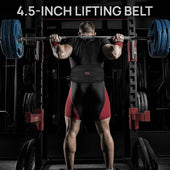
Should Beginners Use a Weightlifting Belt
-
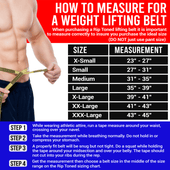
10mm vs 13mm Belt Thickness: The Complete Guide
-

Prong Buckle vs Lever Buckle Belts: The Ultimate Comparison Guide
-

Powerlifting Belts vs Bodybuilding Belts
-

Weightlifting Straps vs. Lifting Hooks: Which is Better?
-

How to Treat Weightlifters Elbow
-

Should You Use Lifting Straps During Bicep Curls for Better Gains?
-

Weightlifting Straps vs. Bare Hands
-

Benefits of Using Weightlifting Straps in Training
-

Mistakes to Avoid When Using Weightlifting Straps
-

Wrist Wraps While Doing Curls
-

Should I Use Wrist Wraps for Bench Press
-

How to Clean Wrist Wraps
-

Are Wrist Wraps Necessary
-

The Ultimate Deadlift Guide: From Form to Performance
-

What Exercises to Use Wrist Wraps For?
-

Are Wrist Wraps Cheating on Bench?
-

Do Wrist Wraps Make You Stronger?
-

Do Wrist Wraps Help With Grip Strength
-

When to Start Using Wrist Wraps
-

Best Weightlifting Belts 2025: Ultimate Buyer's Guide
-

How to Measure for a Weightlifting Belt
-

Can Wrist Wraps Boost Your Grip Strength in Weightlifting?
-

Should You Use Wrist Wraps for Bench Press and Overhead Press?
-

Do Wrist Wraps Help with Wrist Pain During Strength Training? Find Out Here
-

How Can Wrist Wraps Prevent Injury During Heavy Lifting?
-
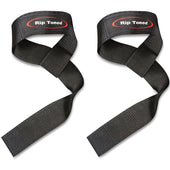
How Do You Use Weightlifting Straps: A Simple Guide for Better Lifts
-

How to Pick a Lifting Belt: A Practical Guide for Every Lifter
-

How to Measure for Lifting Belt
-

Do Weight Lifting Belts Help Lower Back Pain
-

Do I Need a Lifting Belt
-

Purpose of Weight Lifting Belt
-

When to Use a Lifting Belt
-

What Does A Lifting Belt Do
-

What Do Wrist Wraps Do For Lifting
-

How To Wrap A Wrist For Carpal Tunnel
-

How To Wrap Wrist For Pain
-

What Are Wrist Wraps For
-

How Do You Use Weightlifting Straps
-

Why Is Mental Focus Important in Powerlifting? The Key to Peak Performance
-

Can Bodybuilding Help with Fat Loss? Discover Proven Benefits
-

Mastering the Basics: How to Improve Your Powerlifting Technique
-

Why Is Proper Form Crucial in Powerlifting? Tips for Safe and Effective Lifting
-

Can Powerlifting Increase Athletic Performance? Exploring Strength Gains and Sport Benefits
-

Top Tips on How to Avoid Common Injuries in Bodybuilding
-

Why Is Recovery Essential in Bodybuilding: Key Strategies and Benefits
-

Can Powerlifting Improve Overall Fitness? Explained
-

How Many Deadlifts Should I Do?
-

How Much Can a 17 Year Old Deadlift? Average Weights and Tips
-

Why Aren’t My Arms Growing as Fast as My Chest? Top Reasons Explained
-

How to Do Back Compression Deadlift: Best Tips for Pain-Free Lifting
-

Why Is My Bench Press Not Increasing
-
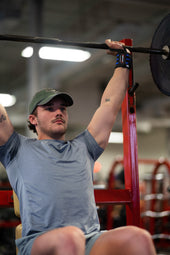
Unlock Your Potential: How to Get Stronger Gradually
-

Unlock Muscle Growth: Understanding What Is the 6-12-25 Rule
-

5 Lbs of Muscle in a Month? Let's Get Real
-

Get that celebrity booty in 10 easy to do work out routines
-

A.M. vs P.M. Workouts
-

Fasting Do’s and Dont's
-

5 Surprising Sources of Protein
-
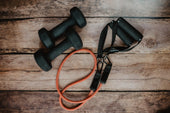
Home Workout Upgrade Must-haves
-
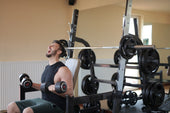
Top 5 Reasons You Aren’t Reaching Your Weightlifting Goals
-
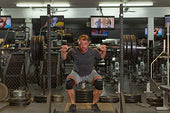
Squats: A Must in Weightlifting and for Strength Training
-

Weightlifting Routines for Men, Women and Beginners
